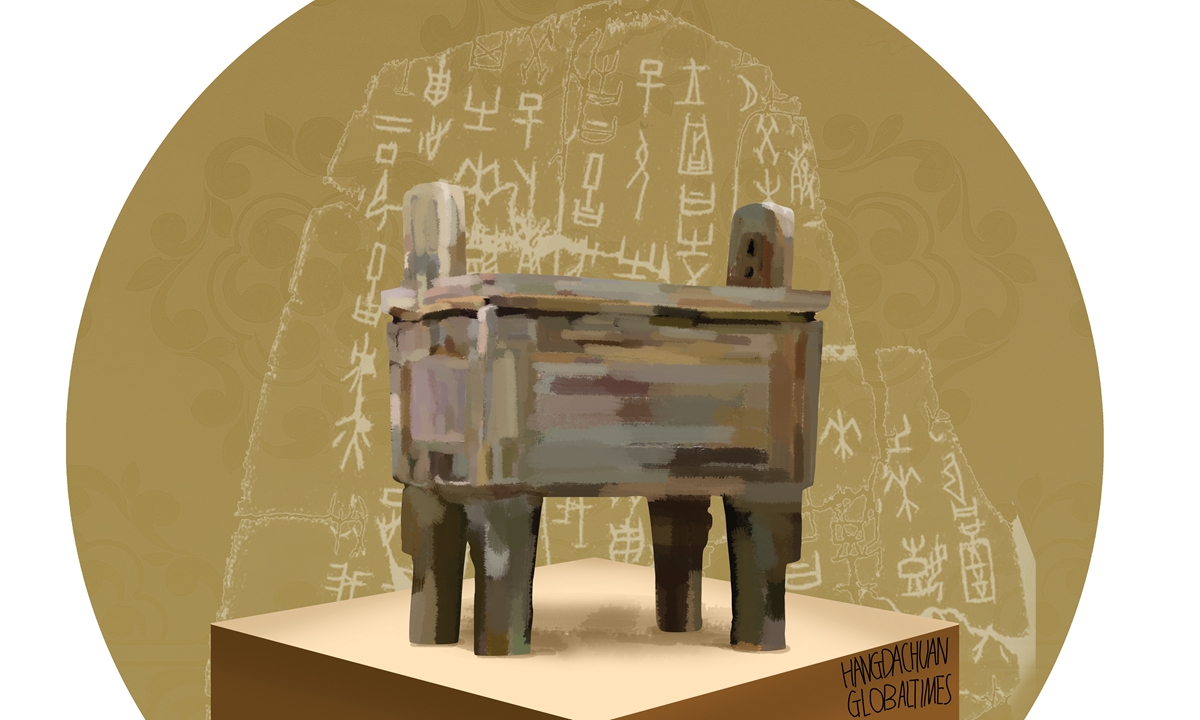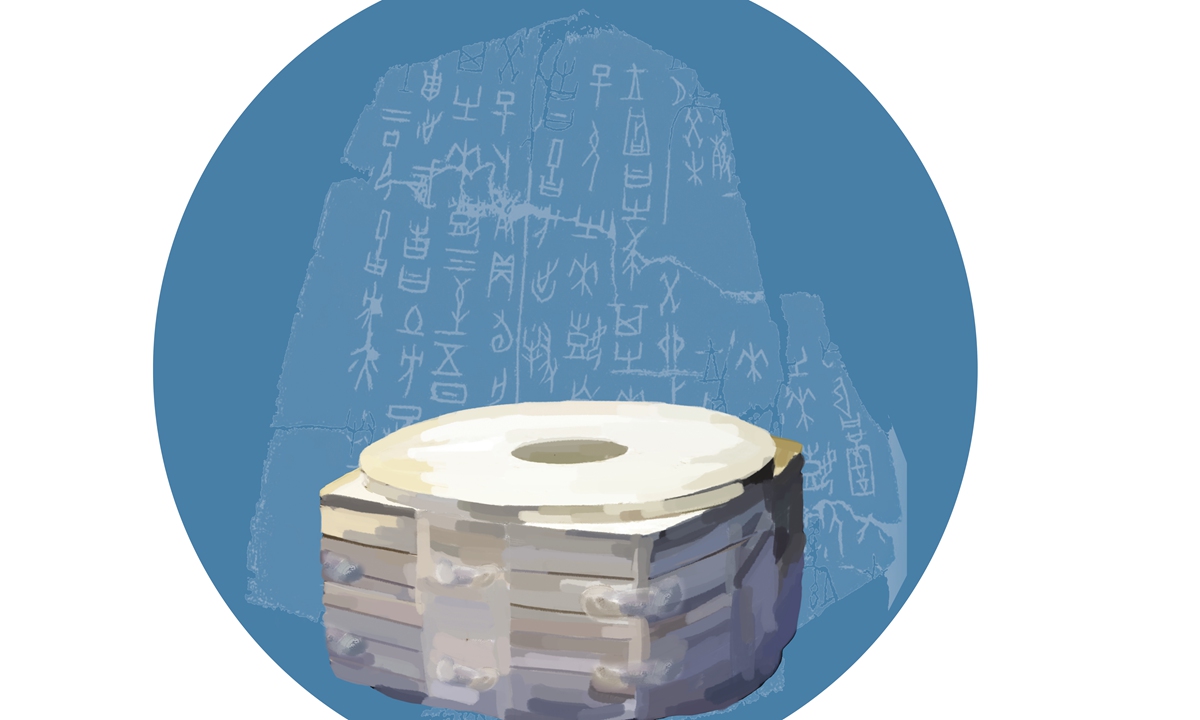
Illustration: Hang Dachuan/Global Times

Illustration: Hang Dachuan/Global Times
The study of the origin, formation, development, as well as the characteristics, mechanisms, and traits of Chinese civilization attracts great attention worldwide.
For a long time, some people held a skeptical attitude toward China's 5,000 years of civilization due to a lack of systematic data. Since its launch in 2001, the project to trace the origins of Chinese civilization has made significant achievements in restoring historical truth, countering skepticism, and presenting new evidence from archaeological excavations and scientific research.
The project has demonstrated how China developed its own unique path toward civilization through its unyielding determination and willpower. Studies have shown that around 5,800 years ago, the development in the complexity of prehistoric societies in the middle and lower reaches of the Yellow River and Yangtze River and the west of Liaohe River basin accelerated, showing signs of the origin of civilization. For example, the Hongshan Culture in the west of Liaohe River basin formed a ceremonial and sacrificial center with stone altars, temples, and tombs, showing clear social differentiation and a theocracy-dominated regional civilization.
Starting 5,300 years ago, various regions in ancient China successively formed early states and entered the first stages of civilization. For example, the Liangzhu culture was characterized by mature rice farming, large-scale construction projects, exquisite pottery, jade wares, ivory scepters and textiles. The vast area had common spiritual beliefs, economic forms and a unified society, which formed the centralized social structure and the initial form of a "monarchy state."
About 4,300 years ago, due to environmental changes and social evolution, the once-prosperous regional civilizations in the Yangtze River and Liaohe River basin declined, while the civilizations in the middle reaches of the Yellow River, like the one around the Taosi site in North China's Shanxi Province, embraced diversified culture and continued to develop, opening a new historical chapter led by the Central Plains. The Taosi site is a large-scale city site with a magnificent palace as well as unearthed cultural relics such as pottery dragon plates, drums, special chimes, jade wares, copper bells, and painted wooden wares. Some researchers theorize that the Taosi site was "Pingyang, the capital of the legendary Chinese Emperor Yao" recorded in ancient books.
Around 3,800 years ago, civilization in the Central Plains region further developed, becoming the core and leader of the overall process of Chinese civilization.
The Erlitou site in Central China's Henan Province revealed a palace foundation composed of halls, courtyards, corridors, and gates. The site is believed to have been the capital of the middle and late Xia Dynasty (c.2070BC-c.1600BC). It is worth noting that the unearthed ritual wares of the Erlitou culture, such as jade wares, pottery wares, and turquoise-inlaid bronze ornaments show that Chinese civilization was entering a dynastic era in which Central Plains region dominated historical development while absorbing and integrating civilizations from all over.
The project has shown that early regional civilizations in China communicated with each other and gradually merged to form a common cultural gene, laying the foundation for the birth of a unified multi-ethnic country. About 6,000 years ago, the spread of painted pottery from the Yangshao Culture, the first culture in China discovered by modern archaeology, throughout the Central Plains shows that vast areas of eastern China had close cultural exchanges.
About 4,500 years ago, the Central Plains region actively absorbed beneficial cultural factors, allowing it to take the lead in cultural development. Wheat, cattle, sheep, and metallurgy native to West Asia were introduced into ancient China, greatly enriching Chinese civilization. About 3,800 years ago, a broad monarchy state centered around the Erlitou culture became the "earliest China," and this influential culture was later inherited by the Shang (c.1600BC-1046BC) and Zhou (1046BC-256BC) dynasties.
The project has raised the definition of civilization and recognized the Chinese approach to decide the standard of a civilized society, namely the development of agriculture and handicraft production, clear class differentiation, the appearance of cities with a formalized hierarchical social order, an increase in population and the emergence of urban centers, and the existence of public power (monarchy) with strong organizational and mobilizing capabilities. This standard is consistent with the characteristics of other civilizations worldwide, making a contribution to the study of world civilization.
In the future, the project will continue to explore unknowns, solve more historical mysteries, and showcase the development path of the Chinese nation and its significant contributions to world civilization, by organizing interdisciplinary efforts, broadening its temporal and spatial scope and deepening international cooperation and comparative research.
The author is a member of the project to trace the origins of Chinese civilization. life@globaltimes.com.cn





